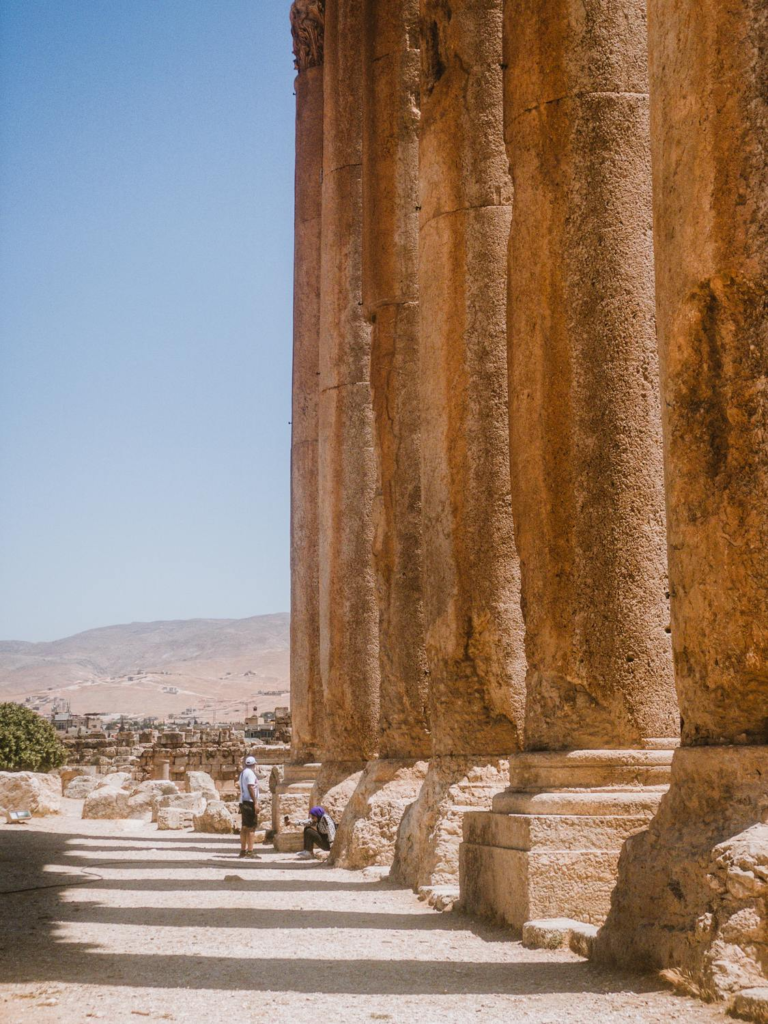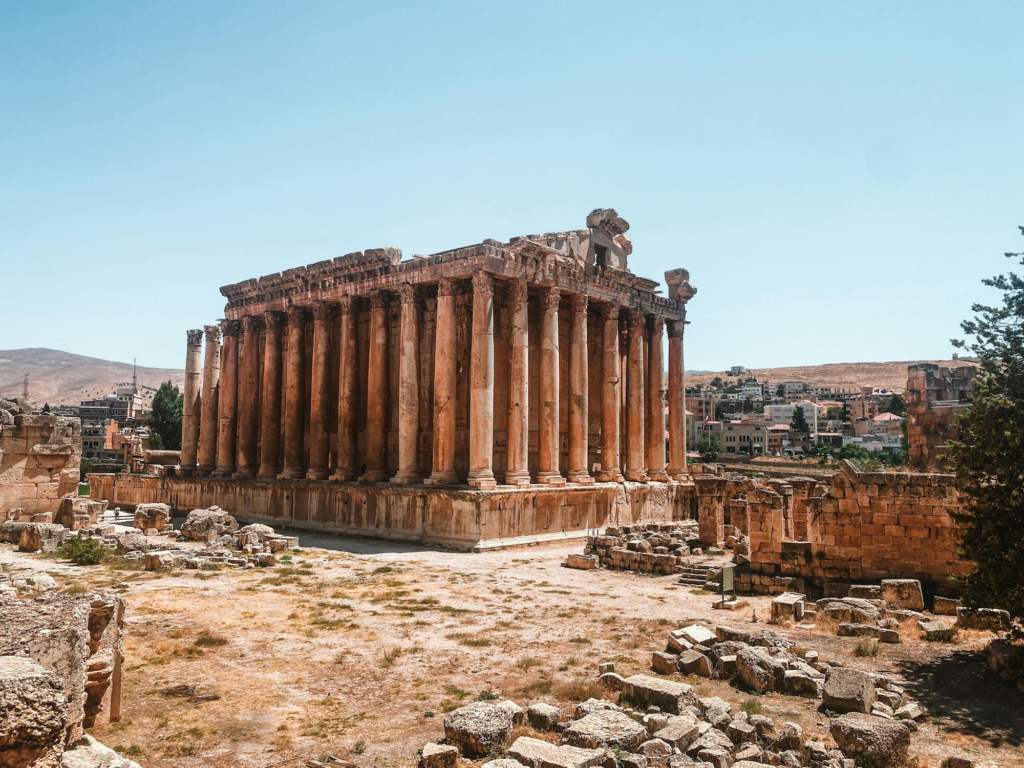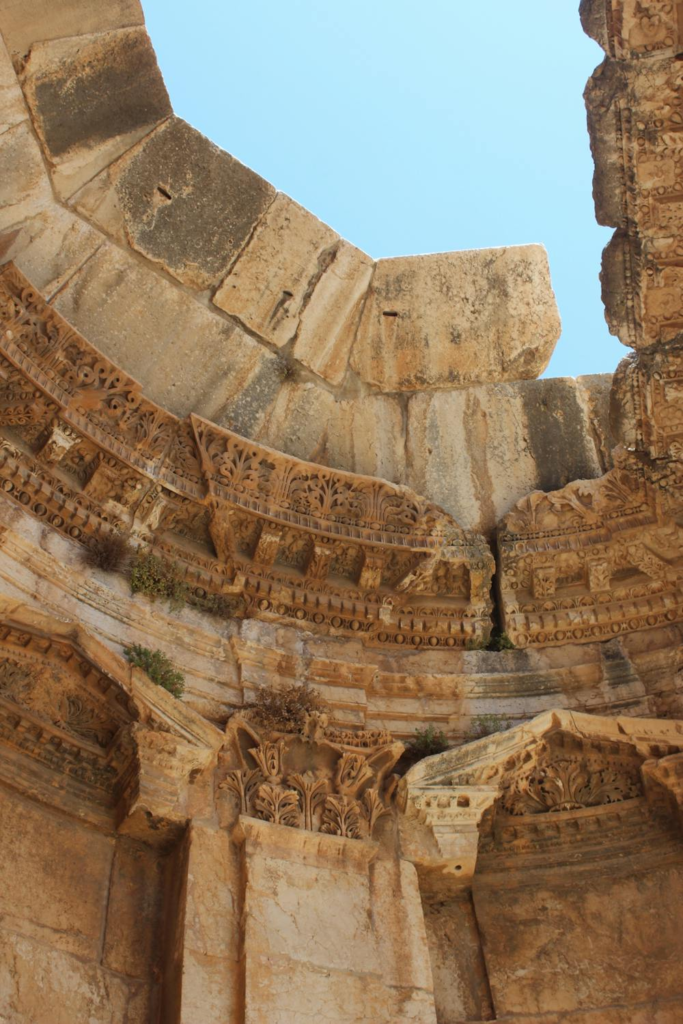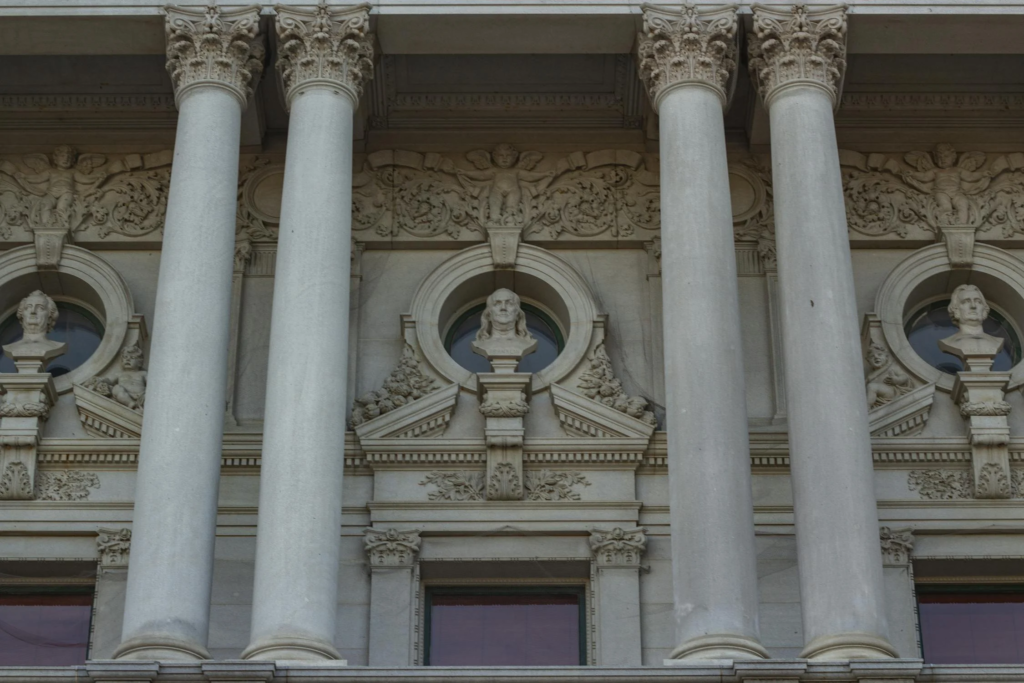How The Ruins of Baalbek Shaped American Architectural Identity

By: Ralph I. Hage / Arab America Contributing Writer
Arab America contributing writer, Ralph Hage, examines how the ruins of Baalbek in Lebanon influenced the design of American Neoclassical architecture, particularly government buildings.
Near the end of the 18th century, the United States of America, a young and growing nation, was rapidly taking shape. With its newly won independence came many pressing questions: How should it be governed? How would its economic and judicial systems function? What would define its national identity? These were just a few of the many uncertainties the country faced.
Even now, as you read these words, the United States continues to reassess and reinvent itself. Throughout history, it has often found inspiration from within, yet it has often drawn upon outside influences. This was especially true in shaping the architectural identity of its governmental buildings.
Have you ever wondered why many United States government buildings resemble modern-day Greco-Roman temples? That resemblance was no accident—it was a deliberate choice made by President George Washington and Secretary of State Thomas Jefferson. They sought to adopt this classical architectural style to visually link the United States to the ancient democracies that inspired its founding principles. This decision gave rise to the American Neoclassical architectural style.
In fact, Washington and Jefferson personally oversaw the competitions to design both the White House and the Capitol Building in Washington, D.C. The city itself was planned and constructed as a symbol of the political and cultural power of the newly formed United States.
While much of the architectural literature focuses on European influences on American Neoclassicism, it frequently overlooks important examples from other parts of the world. One such influential site is Baalbek, the Roman temple complex in present-day Lebanon. Along with other notable structures, Baalbek served as a fundamental source of inspiration for American Neoclassical architects.
As one of the most significant religious and cultural centers of the Roman Empire, Baalbek symbolized divine power and authority—just as Washington, D.C., was designed to represent the strength and ideals of the newly formed United States. Given this parallel, why wouldn’t it have shaped the nation’s architectural identity?
Baalbek

The ruins of Baalbek stand as a testament to the grandeur and sophistication of ancient civilizations. Once a thriving city within the Roman Empire, Baalbek is now renowned for its monumental architecture, including some of the best-preserved and largest Roman temple ruins, particularly the Temple of Bacchus and the Temple of Jupiter.
Originally known as Heliopolis during the Roman period, Baalbek’s history stretches back even further, with roots tracing to the Phoenician civilization and as far back as Neolithic times. Construction of the temple complex began around 16 BC and continued throughout the Roman period, extending into the second and third centuries AD.

Baalbek’s significance lies not only in its sheer scale but also in the remarkable engineering prowess it showcases. The site’s massive stone blocks, some weighing over 800 tons, continue to mystify scholars, as the methods used to transport and precisely place them remain a subject of intrigue.
Beyond its architectural marvels, Baalbek held immense religious importance as a major center of worship for the gods of the Roman pantheon, including Jupiter, Bacchus, and Venus. The surviving ruins reflect a rich fusion of cultures, blending Roman, Greek, and local Phoenician influences. This synthesis highlights the complex interplay of civilizations that shaped the ancient Mediterranean world.
Today, Baalbek is a UNESCO World Heritage site, drawing visitors and researchers alike who seek to explore its rich history and admire its awe-inspiring ruins.
Influence on the American Neoclassical Style

Detailed drawings and measurements of the ruins, particularly the Temple of Bacchus, were studied by architects such as Robert Adam, who found inspiration in elements like column designs and ceiling details. These features influenced American architecture during the 18th and 19th centuries, as architects sought to incorporate the grandeur and intricate details of Roman architecture. Many of these elements, originally found in the ruins of Baalbek, were adapted to fit American design aesthetics and architectural codes, becoming central to the development of American Neoclassical style.

Travel and Documentation
European scholars and architects, such as Robert Wood, traveled to Lebanon and meticulously documented the ruins, making them accessible to architects across the Western world. In 1757, Wood published The Ruins of Balbec, otherwise Heliopolis in Cœlosyria in London, a groundbreaking work that significantly influenced antiquarians and architects in Britain, France, and the United States. His innovative approach to recording the proportions of columns and friezes set a new standard for architectural documentation. Notably, Thomas Jefferson owned a copy of Wood’s book, further cementing its impact on American Neoclassical architecture.
Astrological and Sacred Alignment
Some theories even suggest that Washington, D.C., was deliberately designed with specific astronomical alignments in mind, drawing parallels to ancient religious sites like Baalbek, which incorporated similar celestial considerations in its design. The layout of Washington, with its axes and symbolic streets, has been interpreted by some as a modern reimagining of the ancient practice of aligning architecture with cosmic forces. This concept mirrors the way temples in Baalbek were designed to honor the gods, with their orientation and placement.
Baalbek – An Overlooked Influence
The study of Roman architecture, particularly from prime remaining examples like Baalbek in Lebanon, played a crucial role in shaping the development of the American Neoclassical architectural style. This style emphasized symmetry, grandeur, and classical elements such as columns and pediments, principles that continue to be widely adopted in the design of American government buildings today.
Ralph Hage, a Lebanese American architect and writer, divides his time and work between Lebanon and the United States.
Want more articles like this? Sign up for our e-newsletter!
Check out our blog here!








